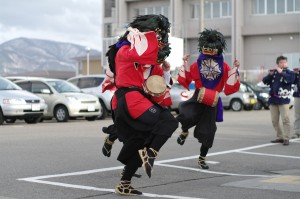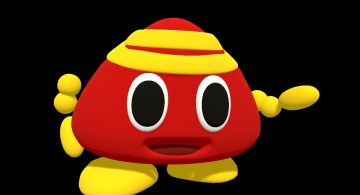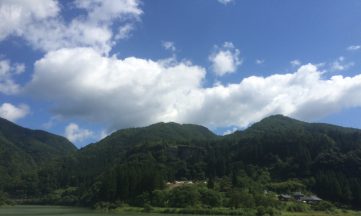会津のこと
会津三匹獅子舞 (Aizu`s Three Lion Dance)
daniel
On March 19th I was able to watch the Three Lion Dance in Aizu with my girlfriend and a friend of one of my former Japanese language teachers.
In Japan the lion dance is very common but every region has their special type of this Lion Dance.
In Aizu there are three dancers dressed as lions. Whereas one lion is female and two lions are male. Also a small boy (幣舞小僧) in possession of a sacred staff with paper decoration will take part in the dance with the lions, which is the custom of the Aizu region.
You can differentiate the gender of the lion by small horns at its head. Male lions do have horns whereas for female lions they are absent. The lions have a small drum (鞨鼓) attached to their costume which they play during their dance.
They dance to traditional music of drums and flutes performed by musicians accompanying the dancers.
They play usually on historical places like Tsuruga-jou (the castle of Aizu Wakamatsu) and in hospitals, homes for the aged or shops.
The dancers are all 60 years and older, excluding the boy. The art how to perform the dance and how to maintain the costumes is only passed on from person to person. This makes it difficult to find someone who knows how to repair the costume.
The Aizu legend has it that the lion dance dates back 300 years ago when a plague hit the Aizu area with a high number of diseased. The people of Aizu performed the Lion Dance (Shishi Mai) for the main Buddhist temples and
Shinto shrines to pray to the gods for the recovery of the people. The dance was held during the beginning of spring (vernal equinox) and therefore the Lion Dance became known as Higan-jishi (彼岸獅子, the Lion of the beginning of spring).
This is why people in Aizu feel the beginning of spring when seeing or hearing the Lion Dance.

 2024/03/01
2024/03/01 2023/02/24
2023/02/24 2021/01/08
2021/01/08 2019/11/29
2019/11/29 2019/08/09
2019/08/09 2017/09/05
2017/09/05 2015/06/10
2015/06/10 2015/04/02
2015/04/02